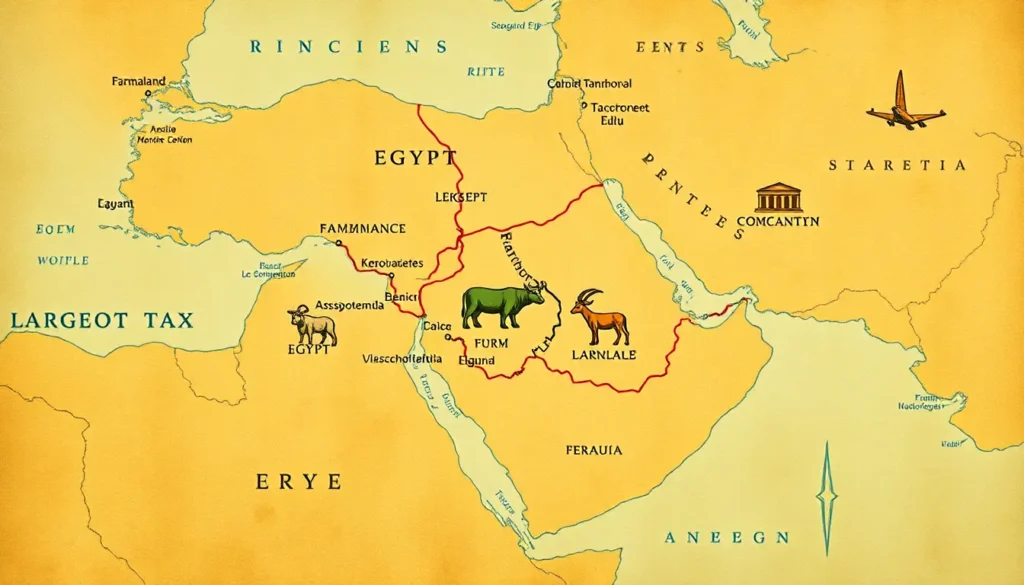Table of Contents
ToggleProperty taxes have shaped the landscape of public funding and local governance for centuries. From their origins in ancient civilizations to the modern systems in place today, these taxes reflect society’s evolving relationship with land ownership and community development. Understanding the history of property taxes reveals not just a financial obligation but also the societal values and priorities that have influenced tax policies over time.
As communities grow and change, so do the mechanisms for collecting property taxes. This article dives into the historical context of property taxes, exploring their inception, the various reforms they’ve undergone, and how they continue to impact homeowners and local governments alike. By tracing the evolution of property tax systems, readers will gain insight into the crucial role these taxes play in funding essential services and shaping the future of their communities.
Overview of Property Tax History
Property taxes trace their origin to ancient civilizations, such as Egypt and Greece, where land ownership determined tax liabilities. In medieval Europe, kings and lords heavily relied on property-based taxation to fund armies and administration. By the 18th century, many countries established more formalized property tax systems to support emerging governments.
The United States adopted property taxes during colonial times, often as a method to support local governments. Initially, these taxes relied heavily on property values and were assessed based on immoral valuations. Over time, property taxes evolved, transitioning from a punitive measure into a more structured framework aimed at equitable funding for essential services like education and infrastructure.
Significant reforms emerged in the 19th and 20th centuries, driven by industrialization and urbanization. Tax assessors implemented standardized property assessments, which reduced disparities in tax burdens. The rise of local governments emphasized equitable funding solutions, increasing reliance on property taxes as a primary revenue source.
Contemporary property tax systems incorporate measures to ensure fairness, such as assessment caps and exemptions for families or seniors. These adjustments acknowledge the changing economic landscape and the need for access to affordable housing. Property taxes remain pivotal in funding essential services, illustrating their continuous evolution and significance in public policy and community development.
Early Beginnings of Property Taxation

Property taxation dates back thousands of years, with its origins rooted in ancient civilizations. Understanding its development provides insight into its significance in contemporary governance and societal structures.
Ancient Civilizations
Ancient civilizations such as Egypt, Mesopotamia, and Greece instituted property taxes to support their growing administrative needs. In Egypt, landowners paid taxes in the form of a portion of their harvest, which funded essential services like irrigation and military efforts. In Mesopotamia, property tax systems evolved to encompass livestock and real estate, contributing to temples and state functions. Greece implemented a system where property taxes were levied based on land value, directly correlating tax obligations with ownership status. This foundational approach laid the groundwork for modern taxation principles, emphasizing the relationship between property ownership and civic responsibility.
Medieval Tax Systems
During the medieval period, property taxation became a critical mechanism for financing local and national governments. Feudal systems in Europe relied heavily on property taxes to support military endeavors and the upkeep of royal households. Lords imposed taxes on their vassals based on landholdings, often leading to conflict over valuations and collection methods. The introduction of formal assessments aimed to create more predictable and equitable tax structures. By the late Middle Ages, many monarchies standardized property taxes, enabling better resource allocation for public services, such as infrastructure and defense. This evolution reflected the rising importance of property ownership in societal hierarchies and governance systems.
Development Through the Ages
Property tax systems have evolved significantly over time, shaped by political, economic, and social changes. This evolution reveals how property taxes have remained integral to governance and public welfare.
The American Revolution Impact
The American Revolution significantly influenced property tax systems, leading to a shift in accountability and authority. Colonists’ grievances against British taxation prompted a reassessment of property tax principles. After the revolution, states sought to establish their tax frameworks, focusing on land ownership and local governance. By emphasizing equal taxation for citizens, new systems aimed to avoid previous inequities, thus fostering political participation and civic responsibility.
Changes in the 19th Century
The 19th century marked a period of extensive reform in property tax systems, driven by rapid industrialization and urbanization. Governments established standardized assessment practices to reflect property values accurately, ensuring fairness in tax burdens. The emergence of railroads and infrastructure projects required substantial public funding, which property taxes facilitated. Reforms, such as the introduction of progressive taxation principles, aimed to alleviate disparities, making tax systems more equitable for growing populations. Additionally, more comprehensive exemptions and deductions emerged to support families and encourage homeownership during this transformative era.
Modern Property Tax Framework
Modern property tax systems reflect a blend of historical practices and contemporary needs, balancing the need for public funding with fairness to taxpayers.
State vs. Local Taxation
States impose property taxes primarily to generate revenue for local governments, schools, and infrastructure. Local taxation often varies significantly, with policies tailored to specific regional needs. For example, urban areas may prioritize funding for public transport, while rural jurisdictions might focus on agricultural development. Certain states, like New Jersey and Illinois, have high property tax rates, while others, like Hawaii and Alabama, utilize lower rates. This variation creates disparities in funding and service provision, highlighting the intricate relationship between state regulations and local tax requirements.
Assessment Methods and Valuation
Assessment methods also play a crucial role in the modern property tax framework. Various approaches include market value assessments, which consider recent property sales to determine fair value, and cost-based valuations, which factor in replacement costs minus depreciation. Many jurisdictions utilize a combination of techniques to achieve accuracy and equity. For instance, the Uniform Standards of Professional Appraisal Practice (USPAP) guides assessors to maintain consistency. Additionally, some areas implement periodic revaluations, which adjust property values every few years to reflect market changes. These practices aim to ensure taxpayers contribute equitably based on property value, while also minimizing disputes over assessments.
Challenges and Reforms
Property taxation faces ongoing challenges, necessitating continuous reforms to address equity and efficiency in revenue generation. Stakeholders strive to create systems that fairly distribute tax burdens while providing essential services.
Equity in Property Taxation
Equity in property taxation remains a significant challenge. Many systems traditionally assess properties based on outdated or inaccurate valuations, leading to unequal taxation. Properties in rapidly gentrifying areas often increase in value faster than assessments reflect, resulting in higher tax burdens for homeowners in these communities. Conversely, properties in declining neighborhoods may retain outdated valuations, causing disparities in tax contributions. To address these issues, jurisdictions implement various strategies, such as statewide assessment standards and regular revaluations. These policies aim to adjust assessments to reflect current market conditions, promoting a fairer distribution of tax responsibilities.
Recent Legislative Changes
Recent legislative changes have sought to reform property tax systems, emphasizing fairness and transparency. Nationally, states have introduced measures to limit property tax increases through assessment caps or rate freezes, especially aimed at protecting low-income homeowners and seniors. Some states have enacted legislation granting exemptions for first-time homebuyers or implementing targeted relief programs for vulnerable populations. These reforms recognize the importance of maintaining housing affordability within the community. Additionally, new transparency requirements for property tax assessments enhance accountability, allowing taxpayers to better understand how their contributions support local services. Overall, legislative shifts prioritize equitable taxation while addressing varying economic pressures across regions.
Understanding property tax history reveals its crucial role in shaping local governance and public funding. From ancient civilizations to modern systems, property taxes have evolved to reflect societal needs and economic changes. The journey illustrates the balance between fair taxation and the need for reliable revenue sources.
As communities continue to grow and change, ongoing reforms are essential to address disparities and ensure equitable contributions from property owners. The future of property taxation lies in adapting to these challenges while maintaining transparency and fairness. This historical perspective serves as a foundation for informed discussions on property tax policies moving forward.




